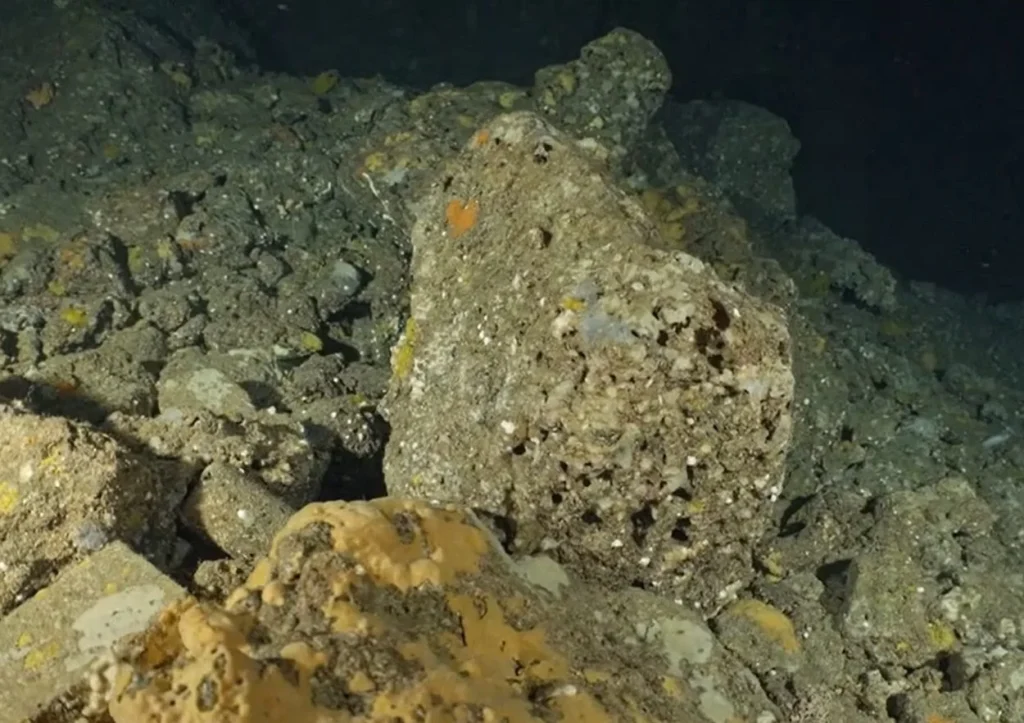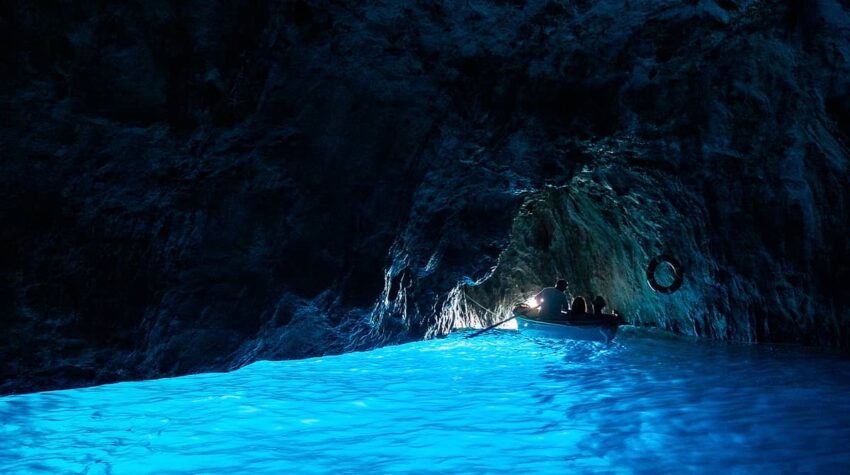The Blue Grotto is a sea cave off the coast of the island of Capri, famous for its narrow arched entranceway and the bright blue water created by the sunlight shining through the underwater cavity. During recent excavations, a submerged carved stone block was discovered lying on the seabed.
The cave is 60 meters long and 25 meters wide, with a sandy bottom. During low tide it is two meters wide and about one meter high, allowing safe access only when the tide is low and the sea is calm.
Objects placed in the water of the cave are famously silvery. This is due to the tiny bubbles that cover the outer surface of the object when it is placed underwater. The bubbles cause light to refract differently from the surrounding water, giving the silver effect. A visitor who puts their hand in the water can see it eerily “shine” in this light.
In antiquity, the cave served as Emperor Tiberius’ private bathing area and natural sea temple (Tiberius ruled from 14 to 37 AD). He commissioned the construction of an Imperial Nymphaeum inside the cave, decorated with various statues, including depictions of Roman gods. The cave was also adorned with resting areas on its edge.



Underwater excavations in the 1960s found three statues of the Roman sea gods Neptune and Triton, which are now on display in a museum in Anacapri. In 2009, seven statue bases were also recovered from the cave floor.
According to a reconstruction of how the Blue Grotto looked in Roman times, a group of Triton statues, headed by a statue of Neptune, may have stood on the walls of the cave.
The Nymphaeum is also linked to the Villa di Gradola, located just above the Blue Grotto. This villa is believed to be one of Tiberius’ twelve villas on the island, as documented by the Roman historian Tacitus.
In an announcement by the Superintendency of Archaeology, Fine Arts and Landscape for the Metropolitan Area of Naples, archaeologists discovered a block of worked stone 3 meters below the water’s surface, purported to be a sculptural decoration of the imperial fountain.
Using balloons, divers carefully moved the stone block through the cave opening, which was sent to the port of Capri for further study.
US writer, humorist, essayist, entrepreneur Mark Twain also visited the Blue Grotto in 1867 and recorded his thoughts in his book ‘The Innocents Abroad’.
Cover Photo: Capri
